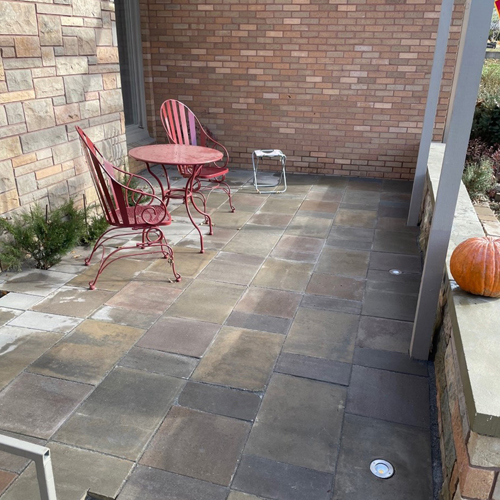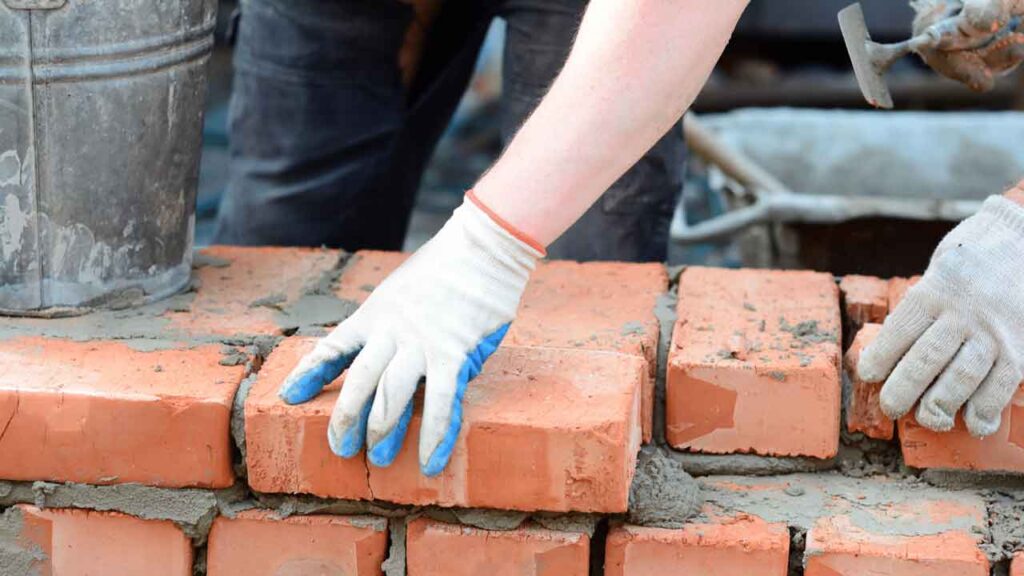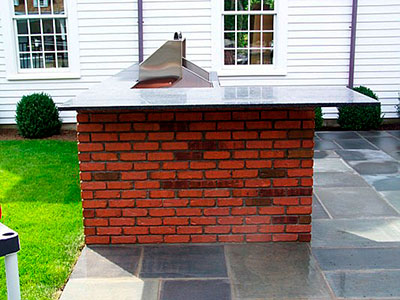The Best Guide To Chimney Flashing And Cap Repair
Table of Contents8 Simple Techniques For Siding ContractorSiding Contractor - TruthsFacts About Chimney Sweep UncoveredSome Known Factual Statements About Tuckpointing All About Roofing ContractorNot known Factual Statements About Step Repair

The acid dissolves all the carbonate-containing minerals not just in the binder, but likewise in the accumulation (such as oyster coverings, coral reefs sands, or various other carbonate-based materials), along with any type of various other acid-soluble materials. The sand as well as fine-grained acid-insoluble material is left behind. There are a number of variants on the simple acid digestion test.
Basic acid food digestion approaches are quick, cost-effective, as well as very easy to perform, but the information they offer regarding the original composition of a mortar is restricted to the color as well as texture of the sand. The gas collection method supplies even more details about the binder than a basic acid food digestion test. analysis approaches that have actually been made use of to assess mortars include polarized light or thin-section microscopy, scanning electron microscopy, atomic absorption spectroscopy, X-ray diffraction, and also differential thermal evaluation.
6 Simple Techniques For Tuckpointing
Historical mortars were not prepared to narrowly specified requirements from materials of consistent quality; they have a large array of locally obtained products combined at the discretion of the mason. While a certain method could be able to properly establish the initial proportions of a lime-cement-sand mortar prepared from modern materials, the effectiveness of that method for evaluating historic mortars is suspicious unless it has actually been tested versus mortars prepared from materials extra typically utilized in the past.
It is a common mistake to presume that firmness or high toughness is a measure of appropriateness, specifically for lime-based historic mortars. Stress and anxieties within a wall triggered by development, contraction, moisture migration, or negotiation needs to be fit somehow; in a stonework wall surface, these stress and anxieties ought to be alleviated by the mortar as opposed to by the masonry devices.
High lime mortars are a lot more absorptive than denser concrete mortars. Historically, mortar acted as a bedding materialnot unlike an expansion jointrather than a "adhesive" for the masonry devices, and wetness had the ability to migrate with the mortar joints rather than the stonework devices. When wetness vaporizes from the masonry it transfers any kind of soluble salts either on the surface as efflorescence or below the surface area as subflorescence.
Everything about Paver Installation
If the mortar does not permitmoisture or moisture vapor to migrate out of the wall as well as vaporize, theresult will certainly be damage to the masonry systems. Sand is the biggest part of mortar as well as the product that offers mortar its distinctive color, structure and cohesiveness. Sand needs to be without contaminations, such as salts or clay.


Things about Chimney Services
For repointing, rose city concrete must adjust to stampcrete stamps ASTM C 150. White, non- staining rose city concrete might supply a far better shade match for some historical mortars than the a lot more generally available grey rose city cement. But, it needs to not be presumed, however, that white rose city cement is always ideal for all historic structures, considering that the original mortar might have been mixed with grey cement.
Because of this, they generally are not advised for use on historical stonework structures. Moisturized lime mortars, and also pre-blended lime putty mortars with or without a matched sand are readily readily available. Custom mortars are likewise offered with shade. In the majority of instances, pre-blended lime mortars containing sand might not provide a precise match; nonetheless, if the job requires total repointing, a pre-blended lime mortar may be worth thinking about as long as the mortar is suitable in strength with the stonework.
If a preblended lime mortar is to be used, it must include Kind S or SA hydrated lime adjusting to ASTM C 207. Water should be potableclean and also devoid of acids, alkalis, or various other liquified organic products. Along with the shade of the sand, the appearance of the mortar is of vital relevance in duplicating historical mortar.
5 Easy Facts About Roofing Contractor Described
Selection of admixtures ought my review here to be made by the architect or building conservator as component of the specifications, not something consistently included by the masons. Normally, contemporary chemical additives are unnecessary and may, in fact, have destructive impacts in historic masonry tasks. Using antifreeze substances is not suggested. They are not very effective with high lime mortars as well as may introduce salts, which may create efflorescence later.
For repointing, lime needs to satisfy ASTM C 207, Kind S, or Kind SA, Hydrated Lime for Masonry Purposes. This machine-slaked lime is made to ensure high plasticity as well as water retention. Using quicklime which must be slaked and soaked by hand may have advantages over hydrated lime in some repair tasks if money and time allow.
For repointing, portland concrete ought to adapt ASTM C 150. White, non- discoloring portland concrete may give a much better color suit for some historic mortars than the extra typically available grey portland cement. It must not be presumed, nevertheless, that white rose city cement is always proper for all historic buildings, given that the original mortar might have been blended with grey cement.
See This Report on Step Repair
Therefore, they typically are not advised for use on historic masonry buildings. Moisturized lime mortars, and also pre-blended lime putty mortars with or without a matched sand are commercially offered. Custom mortars are likewise available with color. In the majority of instances, pre-blended lime mortars containing sand might not provide a specific suit; nonetheless, if the task calls for overall repointing, a pre-blended lime mortar might deserve considering as long as the mortar is suitable in stamina with the masonry.
If a preblended lime mortar is to be used, it needs to consist of Type S or SA moisturized lime adapting to ASTM C 207. Water ought to be potableclean and also without acids, antacid, or other dissolved natural products. Along with the color of the sand, the structure of the mortar is of crucial relevance in duplicating historic mortar.
Selection of admixtures ought to be made by the designer or architectural conservator as component of the requirements, not something consistently included by the masons. Generally, modern chemical additives are unnecessary as well as may, in truth, have damaging effects in historical stonework projects. The usage of antifreeze compounds is not suggested. They are not very effective with high lime mortars as well as might present salts, which might cause efflorescence later.